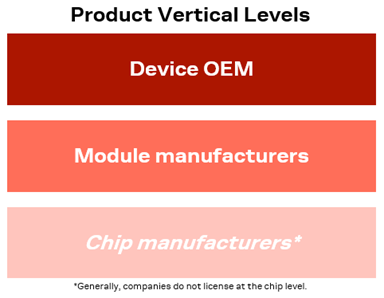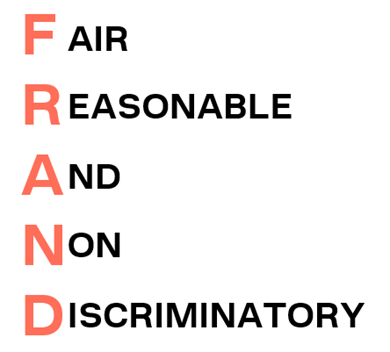
- Support portal
- Evaluation Kits and partner products
u-blox Support
- Product documentation
Documentation
- Investor relations
Investor relations
Technology
|
27 May 2021
IPR, SEP, FRAND and our value proposition
From its very beginnings, cellular technology has been standardized by global associations in the form of various 2G, 3G, 4G, and 5G air interfaces. Standardization is a common collaborative practice among many industries to accelerate the adoption of technologies and simplify product compatibility. Because of these standards, products from different companies within the cellular ecosystem can operate across global networks and work with each other to enable connectivity.
Whenever a patent is considered technically essential to the standard, it becomes a “standard essential patent” or SEP. A patent is essential when there is no possible way to create a workaround that would enable implementing the standard in another way. For example, someone making a telematics device with LTE connectivity must use inventions protected by at least some patents that are part of the LTE standard and where there is no design-around to achieve LTE connectivity. There are thousands of cellular patents that are declared to standards bodies as being essential.
As a result, owners of standard essential patents have a lot of market power, which is why participants at standards organizations are typically committed to license their patents under fair, reasonable, and non-discriminatory (FRAND) terms and conditions.
Cellular SEP licensing is a highly complex and difficult topic. There are many different owners of SEPs, not all of which are known, and not all actively demand that a license be taken. Many licensors are focused on licensing their patents at the higher end of the cellular value chain (i.e., end product.) For example, the telematics device mentioned above would have an LTE chipset at its core, which may be integrated into a cellular module inside a telematics unit that is itself integrated inside a commercial vehicle. In this supply chain, the chipset is the lowest cost component whereas the vehicle is the end product that has a sales price many times higher than the LTE chipset.

Because SEPs are typically licensed as a percentage of the sales price, many licensors would prefer to license or litigate with the vehicle manufacturer, because that is where the royalty potential is greatest regardless of the technology value. For this reason, there are currently no licensors willing to license at the cellular chipset level and there are some that do not even license at the module level.
It has been u-blox’s mission to seek out as many available licenses as possible to offer our customers the best possible protection from patent infringement lawsuits and we are proud to have the broadest SEP patent coverage of any module maker in the industry.
You may think, wait a minute… What about FRAND? Aren’t these rates supposed to be fair, reasonable, and non-discriminatory? How is it possible that you could license the same patent at a completely different valuation to different suppliers in the value chain? It turns out there is a catch - a FRAND commitment does not mean every license offered by a SEP patent owner has to be identical. FRAND is not “a” number and therefore SEP owners may license their patents at different rates. Also, some SEP patent holders do not license based on a technology’s actual value to a product, but license based on maximizing revenue. As a result, royalty rates can vary substantially depending on industry, product type, and licensing objectives of individual licensors.
In addition, it is nearly impossible for potential licensees of SEPs to determine if the licensing rate they are offered is FRAND. Rates are not public and there is no transparency because it is common practice to protect against license terms disclosure using non-disclosure agreements.
Because u-blox has been proactive in licensing many SEPs at the module level, our customers, therefore, benefit from our expertise regarding SEP valuation and the coverage we provide based on rates set at the component level, as opposed to rates based on end products.

In the case of litigation, the cost burden far exceeds that of royalties, as negotiations and litigation can quickly total into millions of dollars. Additional problems may be caused by injunctions, which can halt manufacturing or shipment of products and significantly impact cash flow.
For the SEP licenses covered by u-blox, our customers limit the effective royalty burden to the module level. And since u-blox has successfully sought and secured licenses from major cellular SEP holders and now holds the best-in-the-industry licensed patents package, u-blox customers are able to significantly reduce their product and business risk exposure to patent litigation and its associated costs.